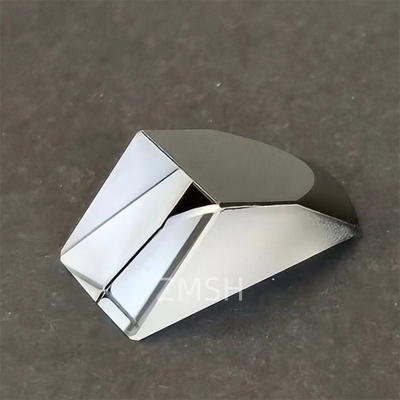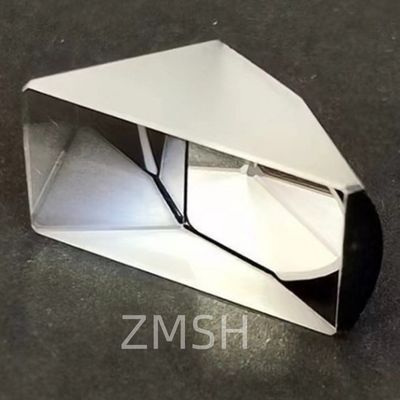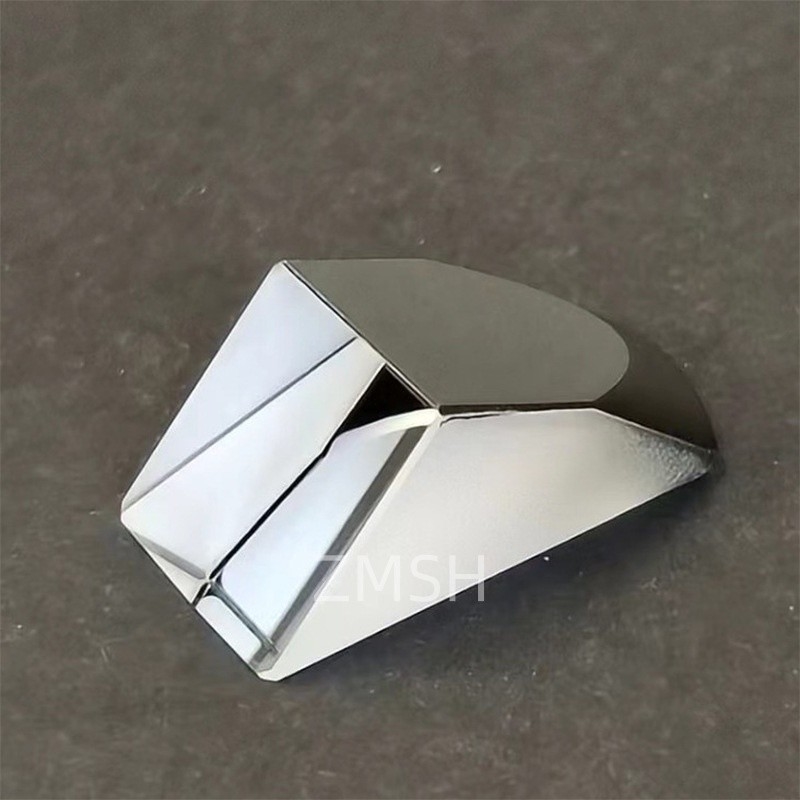Quartz prisms
Product Details:
| Place of Origin: | China |
| Brand Name: | ZMSH |
| Model Number: | Quartz prisms |
Payment & Shipping Terms:
| Minimum Order Quantity: | 2 |
|---|---|
| Price: | 20USD |
| Packaging Details: | custom cartons |
| Delivery Time: | 2-4 weeks |
| Payment Terms: | T/T |
| Supply Ability: | By case |
|
Detail Information |
|||
| Material: | Quartz | Refractive Index (@587 Nm): | ~1.458 |
|---|---|---|---|
| Thermal Expansion Coefficient: | 0.55 × 10⁻⁶ /K (near Zero Expansion) | Transmission Range: | 180 Nm (deep UV) ~ 2.2 µm (near IR) |
| Chemical Stability: | Acid-resistant, Corrosion-resistant | Radiation Resistance: | Suitable For Aerospace And Nuclear Environments |
Product Description
Introduction
Quartz prisms are high-precision optical components made from high-purity fused or crystalline quartz (SiO₂). They are designed to manipulate light through refraction and reflection, making them essential in a wide range of photonics, laser, imaging, and analytical systems.
Compared to standard optical glass, quartz prisms offer superior UV transparency, thermal and chemical resistance, and dimensional stability, making them ideal for demanding environments including aerospace, laser optics, and laboratory instrumentation.
Manufacturing Process
The production of quartz prisms involves multiple steps to ensure optical clarity, dimensional accuracy, and durability:
-
Material Selection
Quartz prisms are typically made from:-
Fused quartz (amorphous) – offers isotropic properties, UV transparency, and high-temperature resistance
-
Crystalline quartz – used for polarization optics and piezoelectric applications, available in X-, Y-, Z-cut orientations
-
-
Cutting and Grinding
Raw quartz blanks are sliced using diamond saws, then ground into preliminary prism shapes with high-precision equipment. -
Polishing
Optical surfaces are polished to sub-micron flatness (typically <λ/10) and surface roughness (<1 nm Ra) to ensure high transmission and minimal scattering. -
Coating (Optional)
Depending on the application, quartz prism surfaces may be coated with:-
Anti-reflective coatings (UV, VIS, NIR ranges)
-
Metallic reflective coatings (Al, Ag, Au)
-
Beam-splitting or polarizing coatings
-
-
Quality Control
Each quartz prism undergoes strict inspection for angle accuracy, flatness, scratch-dig surface quality, and spectral transmission.
Types of Optical Prisms
1. Right-Angle Prism
-
Structure: A triangular prism with one 90° angle and two 45° angles.
-
Function: Redirects light by 90° or 180° depending on orientation and usage.
-
Applications: Beam steering, image rotation, periscopes, alignment tools.
![]()
2. Wedge Prism
-
Structure: Two flat surfaces angled slightly from one another (like a thin slice of pie).
-
Function: Deviates light by a small, precise angle; can be rotated to scan the beam circularly.
-
Applications: Laser beam steering, adaptive optics, ophthalmology instruments.
![]()
3. Pentaprism
-
Structure: Five-sided prism with two reflective surfaces.
-
Function: Deflects light by exactly 90° regardless of entry angle; maintains image orientation.
-
Applications: DSLR viewfinders, surveying equipment, alignment optics.
![]()
4. Dove Prism
![]()
-
Structure: A long, narrow prism with a trapezoidal profile.
-
Function: Rotates an image by twice the angle of the prism’s physical rotation.
-
Applications: Image rotation in beam delivery systems, interferometers.
5. Roof Prism (Amici Prism)
-
Structure: A right-angle prism with a “roof” edge forming a 90° V-shape.
-
Function: Inverts and reverts the image, maintaining correct orientation in binoculars.
-
Applications: Binoculars, spotting scopes, compact optical systems.
6. Beam-Splitting Prism
-
Structure: May involve cemented or air-gapped prisms with partially reflective coatings.
-
Function: Divides an incoming beam into two or more output paths.
-
Applications: Interferometry, fluorescence microscopy, optical instrumentation.
7. Dispersive Prism (e.g., Equilateral Prism)
-
Structure: Usually equilateral triangle shape.
-
Function: Disperses white light into its spectral components (rainbow effect).
-
Applications: Spectrometers, educational optics, wavelength separation.
8. Hollow Roof Mirror Prism
-
Structure: Two right-angle prisms arranged to form a fixed-angle reflective pair.
-
Function: Reflects beams parallel to incident direction but with lateral shift, avoiding interference.
-
Applications: Beam folding in laser systems, optical delay lines, interferometers.
FAQ – Quartz Prism Frequently Asked Questions
Q1: What’s the difference between quartz and glass prisms?
A1: Quartz prisms transmit deeper UV wavelengths, resist higher temperatures, and have better chemical durability than standard glass (e.g., N-BK7). They're suitable for more demanding applications.
Q2: What wavelengths can quartz prisms handle?
A2: Quartz prisms typically transmit light from 180 nm (deep UV) to 2.2 μm (near IR), depending on the material grade and surface quality.
Q3: Are quartz prisms suitable for high-power lasers?
A3: Yes. Quartz has a high laser damage threshold and excellent thermal stability, making it ideal for UV and high-energy laser systems.







